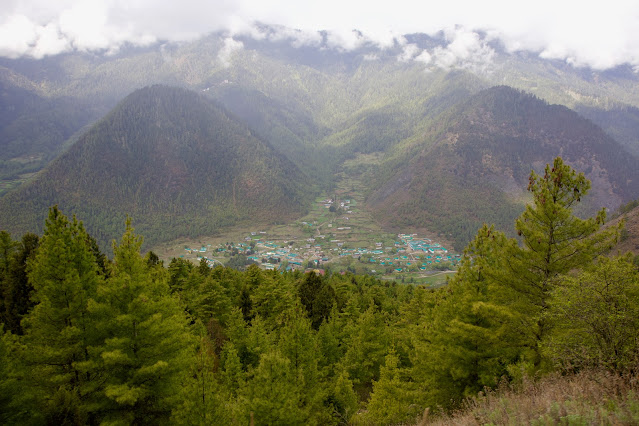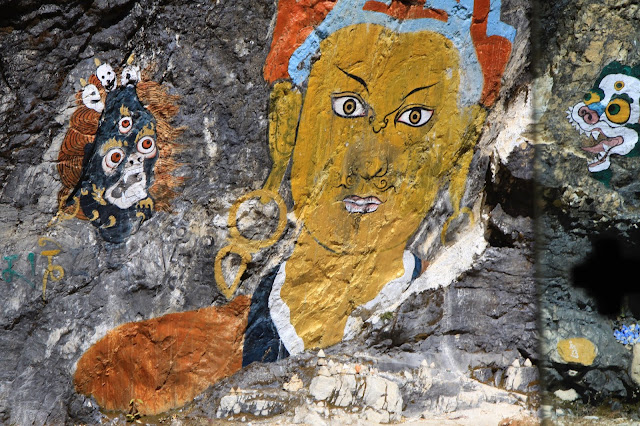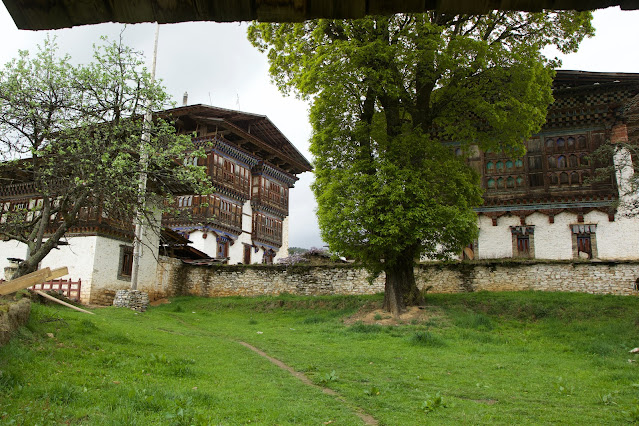Bhutan: Haa Valley, Bumthang, Tang Valley
From Haa Valley to Tang Valley



Haa village is very basic, it has several small shops for clothes, food, and hardware with building supplies.

Homestays are very popular in Haa and are being promoted by the tourism board. The experience is exceptional - the owners are very welcoming, serve delicious food, and make you feel at home.
This is the fishery unit of the Government. Even though fishing is not allowed in Bhutan they work on growing fish and stocking the rivers, but who will catch them?
This is the fishery unit of the Government. Even though fishing is not allowed in Bhutan they work on growing fish and stocking the rivers, but who will catch them?


Looking out from Chele Le is a view of Haa Valley. The huge Indian Army camp is clear from the green rooftops.

Colored prayer flags are also placed on the pass for the wind to blow the flags. The five colors signify balance; Blue represents the sky, White the air, Red fire, Green water, and Yellow the earth. The stamped mantra "Om Mani Padme Hum" is on every flag. People chant the same mantra while holding their prayer beads and especially when walking around a stupa.


Another view of Haa from the road to the Chele La.
Heading East
On the way to Bumthang, a rock painting was on a narrow curve on the old road. Since the road was widened this painting is no longer seen. It was shown in a Bhutanese film called Travellers and Magicians.
Bumthang is famous for many sights, and places to visit, including the Ugen Wangchuck Institute for Conservation and Environmental Research or UWICER.
The institute was started in 2004 and has gone through various transformations but it is an important learning and training center for young Bhutanese.
The Bhutan government stresses conserving and protecting its forests and environment. UWICER recently added the Global Tiger Research Center. The taxidermist seems to have stretched this tiger's skin to make a very long tiger.
The painting of the four harmonious friends below is often seen in Bhutan. This one was on the wall in the UWICER. It is appropriate since it represents "Unity, harmony, and integrity despite one's size or strength."
On the road to Tang Valley, there is an important stop at the "Burning Lake". It is. It is not actually a lake but a stream with what appears to be a bottomless hole.
It is said that Guru Padmasambhava, an incarnation of Buddha, retrieved a treasure chest from the depths of the stream, and with it came a lantern that was alight.







A small chorten sits in the garden of the house overlooking the valley.

Tang Valley is remote. But not difficult to get to and well worth the trip. There are flights to Bumthang then a drive to Tang Valley or a day-long hike from Bumthang. The best trip is to drive one way and fly one way.













Comments
Post a Comment